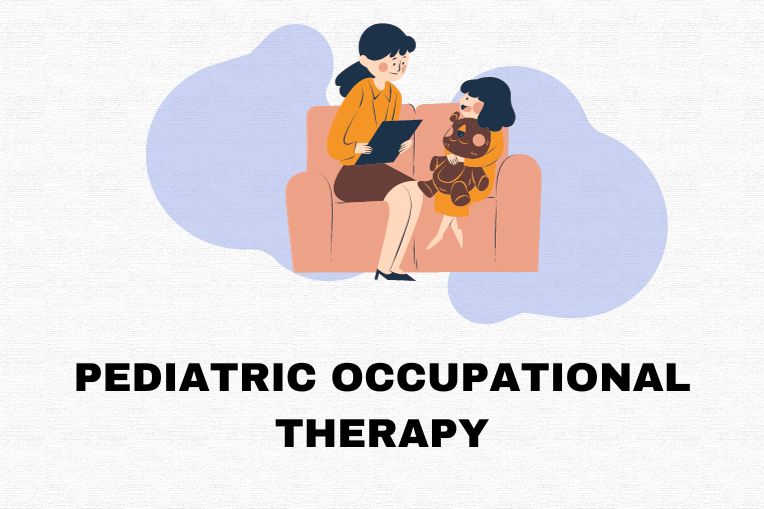Pediatric Occupational Therapy (OT) is a specialized field of therapy that focuses on helping children with physical, cognitive, and developmental disabilities participate in everyday activities. The goal of OT is to support children in developing the skills they need to succeed in their everyday life at home, school, and in the community.
Pediatric OT addresses a wide range of conditions and challenges, including:
-
Developmental delays and disabilities, such as autism and Down syndrome
-
Physical impairments, such as cerebral palsy and spinal cord injuries
-
Sensory processing disorders, such as dyspraxia and sensory integration disorder
-
Learning disabilities, such as ADHD and dyslexia
-
Handwriting difficulties, such as dysgraphia
-
Injuries and illnesses, such as strokes and brain injuries
The role of an occupational therapist in pediatrics is to help children develop, recover, and improve their ability to perform daily activities. OTs work with children and their families to determine the child’s strengths, weaknesses, and needs and then develop an individualized treatment plan.
One of the main tasks of a pediatric OT is to assess the child’s ability to perform everyday activities, such as self-care skills (such as dressing and eating), school-related skills (such as writing and using scissors), and play skills (such as playing with toys and games). The OT may also assess the child’s sensory processing and regulation and how this affects their ability to participate in daily activities.
Treatment plan
Based on the assessment, the OT will develop a treatment plan to help the child improve their skills. Treatment may include:
-
Sensory integration activities to help the child better process and respond to sensory information
-
Fine motor and hand-eye coordination exercises to improve the child’s ability to manipulate objects and perform daily activities
-
Gross motor activities to improve the child’s balance, coordination, and mobility
-
Activities to improve visual-motor and visual-perceptual skills, such as tracking objects and copying from a board
-
Activities to improve handwriting, such as grip strengthening and letter formation
-
Cognitive and perceptual activities, such as memory and problem-solving games
-
Play activities, such as using toys and games to encourage social interaction and creativity.
In addition to working with children one-on-one, pediatric OTs may also provide group therapy sessions. Group therapy can allow children to practice their skills in a social context and can also be beneficial for building confidence and self-esteem.
Pediatric OTs may also provide training and education to parents and caregivers on how to support the child’s development and participation in daily activities. This may include strategies for promoting independence, such as using adaptive equipment, and tips for working with the child on specific skills, such as hand-eye coordination.
The benefits of pediatric OT are numerous. Children who receive OT can experience improved:
-
Fine and gross motor skills, such as grip strength and coordination
-
Sensory processing and regulation, leading to improved focus and attention
-
Handwriting and school-related skills, such as writing and using scissors
-
Self-care skills, such as dressing and eating
-
Play skills, such as playing with toys and games
-
Social interaction and communication skills
-
Independence and confidence
Pediatric OT can also have a positive impact on the child’s overall quality of life, helping them participate more fully.
Benefits of pediatric OT
Helps in Child’s Development
Pediatric occupational therapy (OT) is a specialized form of therapy that focuses on helping children improve their physical, cognitive, and emotional skills in order to perform daily activities. It is a crucial part of a child’s development, as it provides children with the necessary tools to overcome any challenges they might face in their daily lives.
Children who struggle with developmental delays, sensory processing disorder, autism, attention deficit hyperactivity disorder (ADHD), learning disabilities, and other conditions that impact their ability to perform daily activities can benefit from this therapy.
The main goal of pediatric OT is to help children reach their full potential and improve their ability to perform daily activities. This can involve working on fine motor skills, gross motor skills, hand-eye coordination, and self-care skills. OT can also help children with a sensory processing disorder, who may struggle with sensory overload and need to be taught how to cope with stimuli more appropriately.
The therapy process typically begins with an initial evaluation, where the occupational therapist will assess the child’s strengths and weaknesses, as well as any areas of difficulty. Based on this evaluation, the therapist will develop a treatment plan that is tailored to the child’s individual needs. The therapy will then be tailored to the child’s specific needs and can include activities that involve fine motor skills, gross motor skills, hand-eye coordination, and self-care skills.
Pediatric OT can be performed in various settings
The settings include in-home, school, and clinical environments. In-home therapy is designed to help children in their natural environment, while school-based therapy is focused on improving their ability to perform tasks in a school setting. Clinical therapy is usually the most intensive type of therapy and is usually used for children with more severe conditions.
Engaging and fun
One of the main benefits of pediatric OT is that it is designed to be engaging and fun for children. Children who enjoy the therapy process are more likely to make progress and improve their abilities. OT may also involve using toys, games, and other play-based activities that are designed to be fun and engaging for children. This helps to keep the child motivated and helps to make the therapy process a positive experience.
Helps in improving children’s confidence
Another benefit of pediatric OT is that it helps to improve children’s confidence and self-esteem. Children who have difficulty performing everyday tasks may feel frustrated and overwhelmed, which can impact their overall well-being and mental health. Pediatric OT helps to improve children’s abilities and helps them to feel more confident and capable, which can improve their overall well-being and mental health.
In addition to improving physical abilities, pediatric OT can also help children with emotional and social development. For example, children with autism may struggle with social interactions and may need help learning how to communicate and interact with others. OT can help children with autism develop their social skills, which can improve their overall quality of life.
Pediatric OT can also be crucial to a child’s recovery from an injury
Children who have suffered an injury or have a physical condition that affects their ability to perform daily activities may need OT to recover their abilities and regain their independence. OT can help children with physical injuries learn how to perform everyday tasks in a new and adapted way, which can help to improve their overall quality of life.
You can look for pediatric occupational therapy services near you and select the best services.














